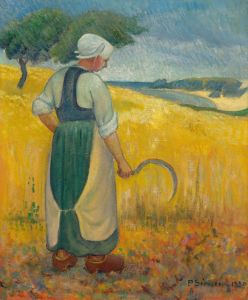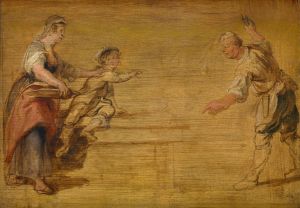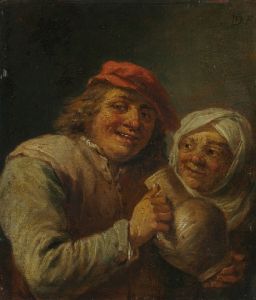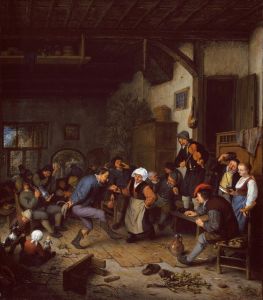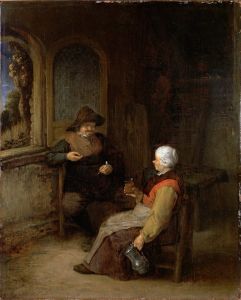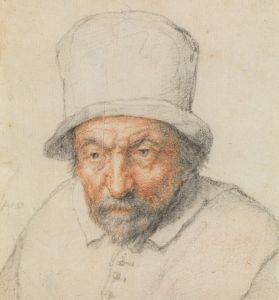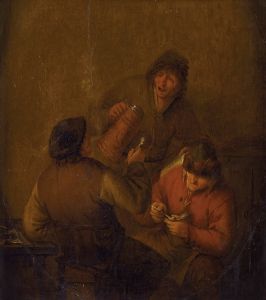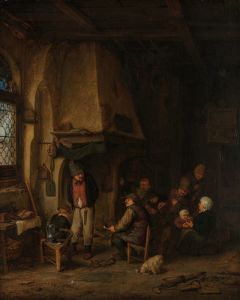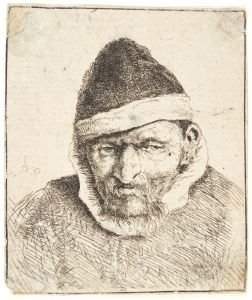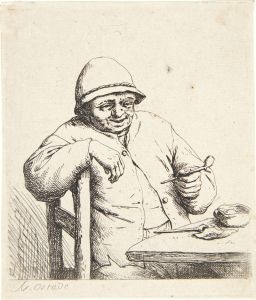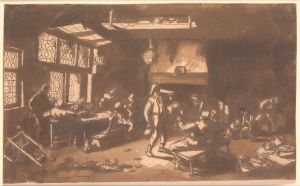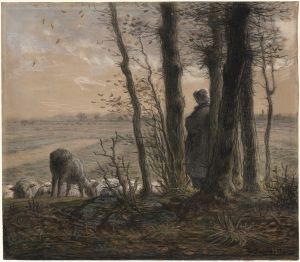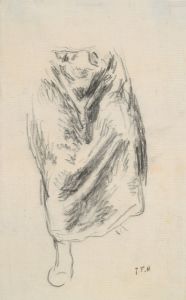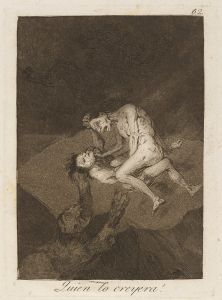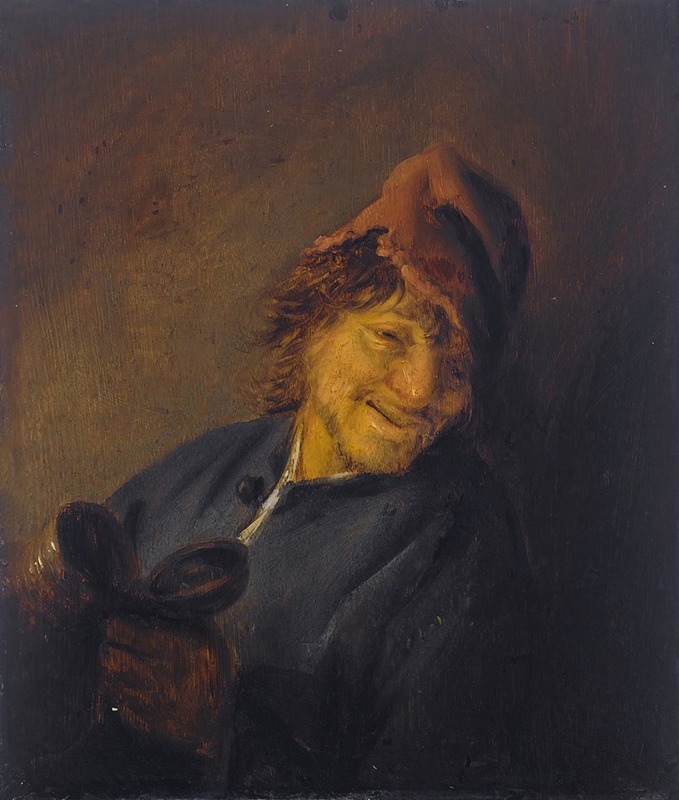
Peasant with a red cap holding a jug
A hand-painted replica of Adriaen van Ostade’s masterpiece Peasant with a red cap holding a jug, meticulously crafted by professional artists to capture the true essence of the original. Each piece is created with museum-quality canvas and rare mineral pigments, carefully painted by experienced artists with delicate brushstrokes and rich, layered colors to perfectly recreate the texture of the original artwork. Unlike machine-printed reproductions, this hand-painted version brings the painting to life, infused with the artist’s emotions and skill in every stroke. Whether for personal collection or home decoration, it instantly elevates the artistic atmosphere of any space.
Adriaen van Ostade was a Dutch Golden Age painter known for his depictions of peasant life. Born in 1610 in Haarlem, Netherlands, van Ostade became a prominent figure in the genre painting movement, which focused on scenes from everyday life. His works are characterized by their detailed observation, lively characterizations, and often humorous depictions of rural and peasant life. One of his notable works is "Peasant with a Red Cap Holding a Jug."
"Peasant with a Red Cap Holding a Jug" is a fine example of van Ostade's ability to capture the essence of 17th-century Dutch peasant life. The painting features a single figure, a peasant, who is depicted wearing a distinctive red cap, a common accessory in van Ostade's works that adds a splash of color and draws the viewer's attention. The peasant is holding a jug, a typical element in van Ostade's paintings, symbolizing the simple pleasures and daily activities of rural life.
Van Ostade's technique in this painting, as in many of his others, involves a careful balance of light and shadow, which adds depth and dimension to the figure. The use of chiaroscuro, a technique that contrasts light and dark, helps to highlight the peasant's features and the texture of his clothing. This attention to detail is a hallmark of van Ostade's style, reflecting his training under the influence of Frans Hals, another master of the Dutch Golden Age.
The setting of the painting is typical of van Ostade's work, often depicting rustic interiors or tavern scenes. These environments provide a backdrop that enhances the narrative of the painting, giving viewers a glimpse into the everyday life of the time. The simplicity of the setting allows the focus to remain on the peasant figure, emphasizing the human element of the scene.
Van Ostade's paintings, including "Peasant with a Red Cap Holding a Jug," are celebrated for their ability to convey the character and spirit of the common people. His works are not merely portraits but are imbued with a sense of storytelling, capturing moments of humor, leisure, and the social dynamics of the period. This approach made his paintings popular during his lifetime and continues to resonate with audiences today.
Throughout his career, Adriaen van Ostade produced a significant body of work, including paintings, drawings, and etchings. His influence extended beyond his own time, impacting later artists who admired his ability to depict the vibrancy and authenticity of peasant life. His works are housed in major museums around the world, including the Rijksmuseum in Amsterdam and the Louvre in Paris, where they continue to be studied and appreciated for their artistic and historical significance.
In summary, "Peasant with a Red Cap Holding a Jug" exemplifies Adriaen van Ostade's mastery of genre painting, showcasing his skill in capturing the nuances of peasant life with humor and empathy. Through his detailed and lively depictions, van Ostade offers a window into the world of 17th-century Dutch society, making his work an enduring part of art history.





